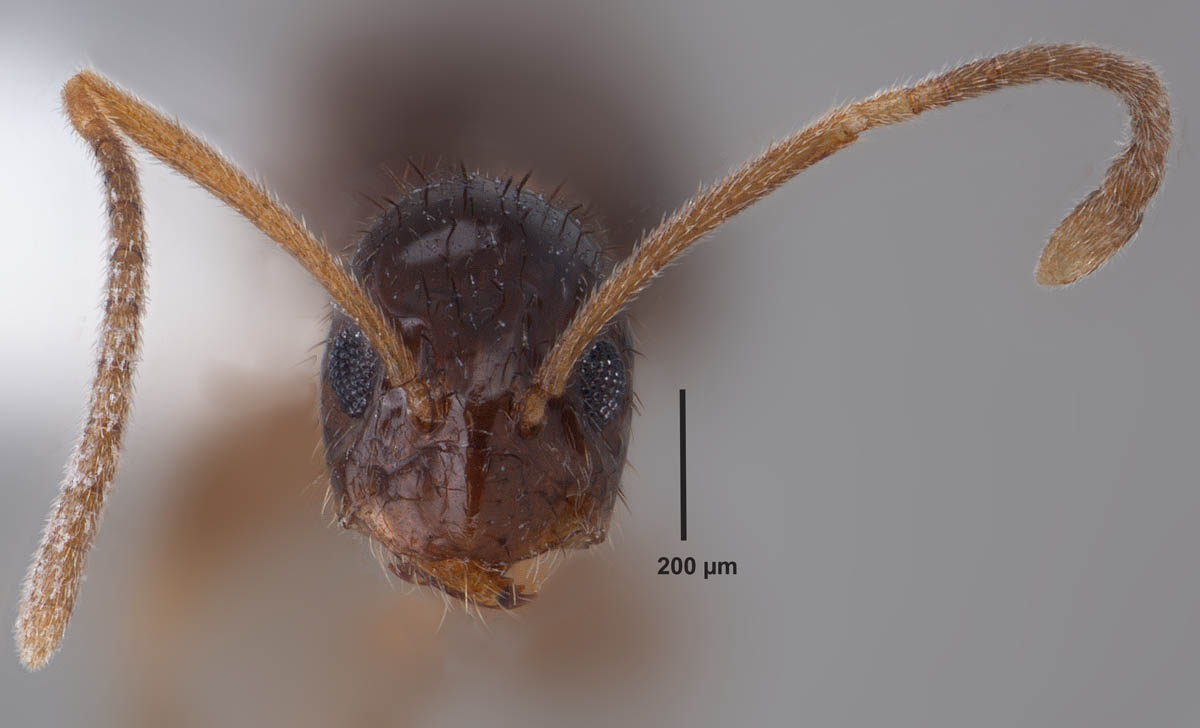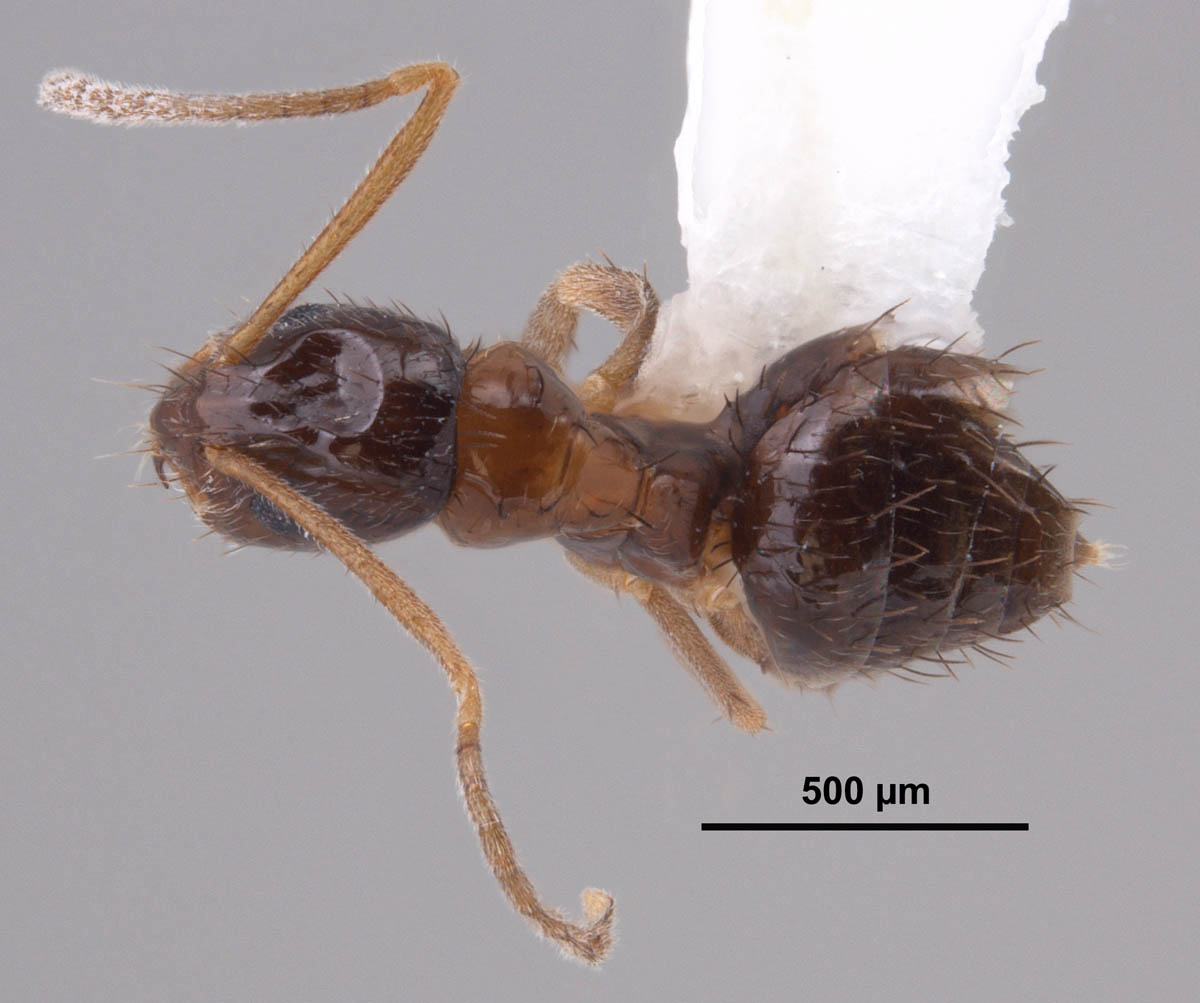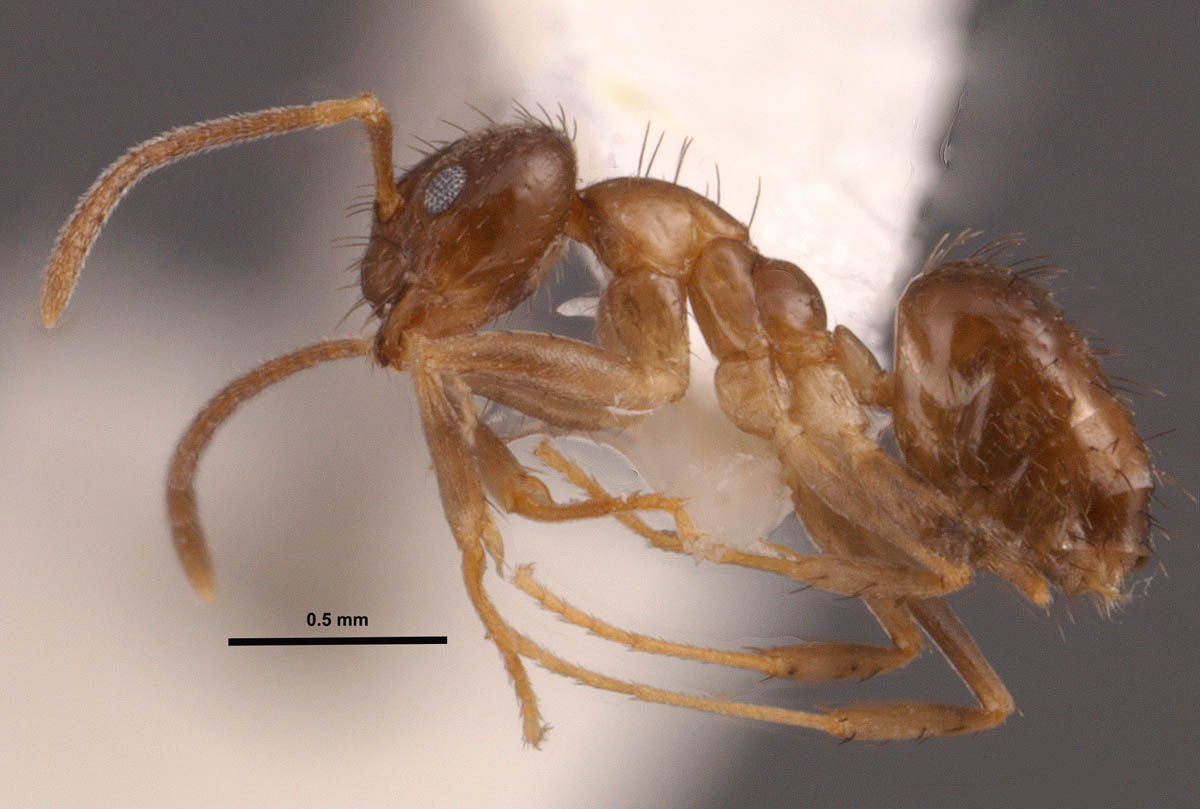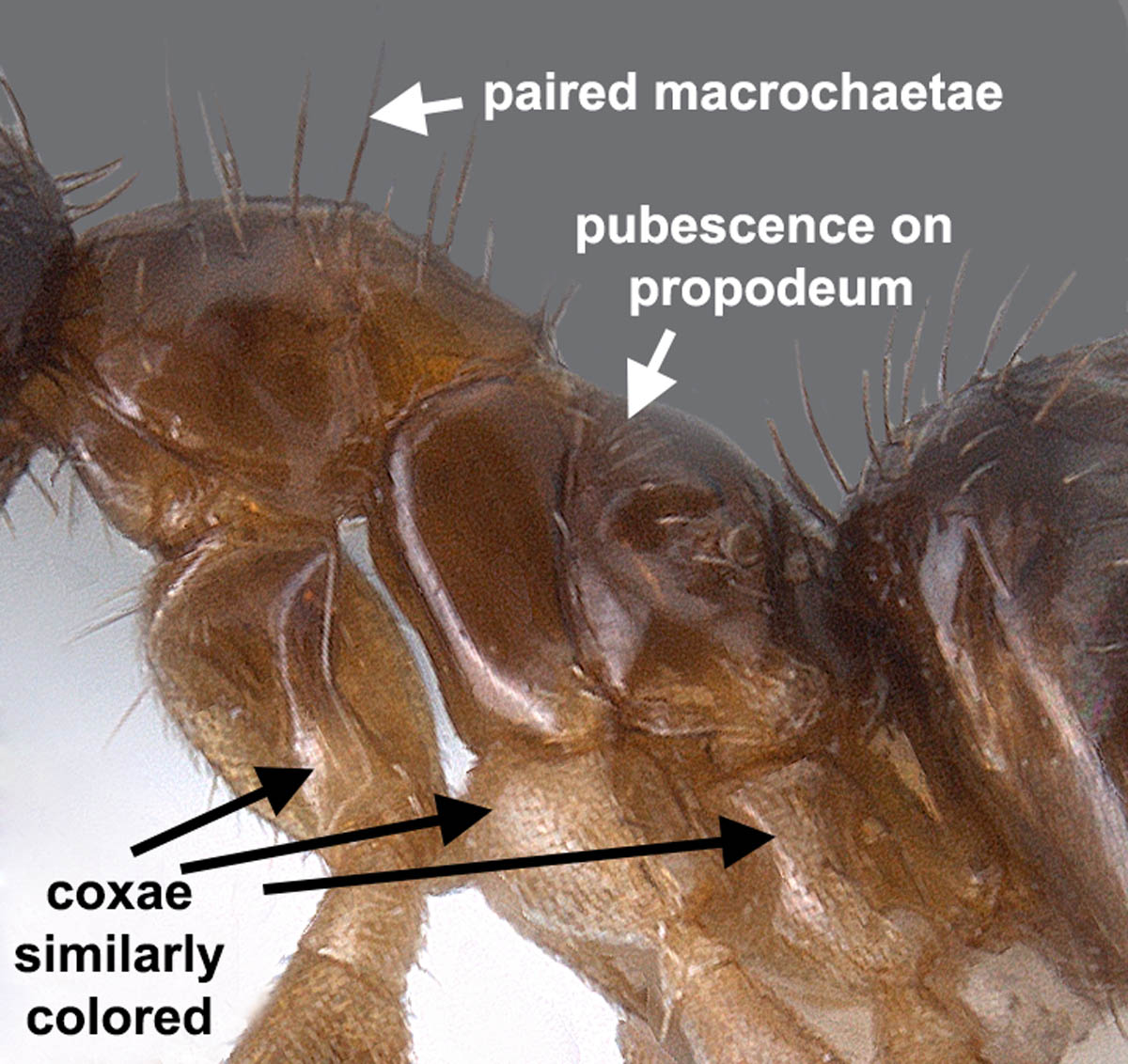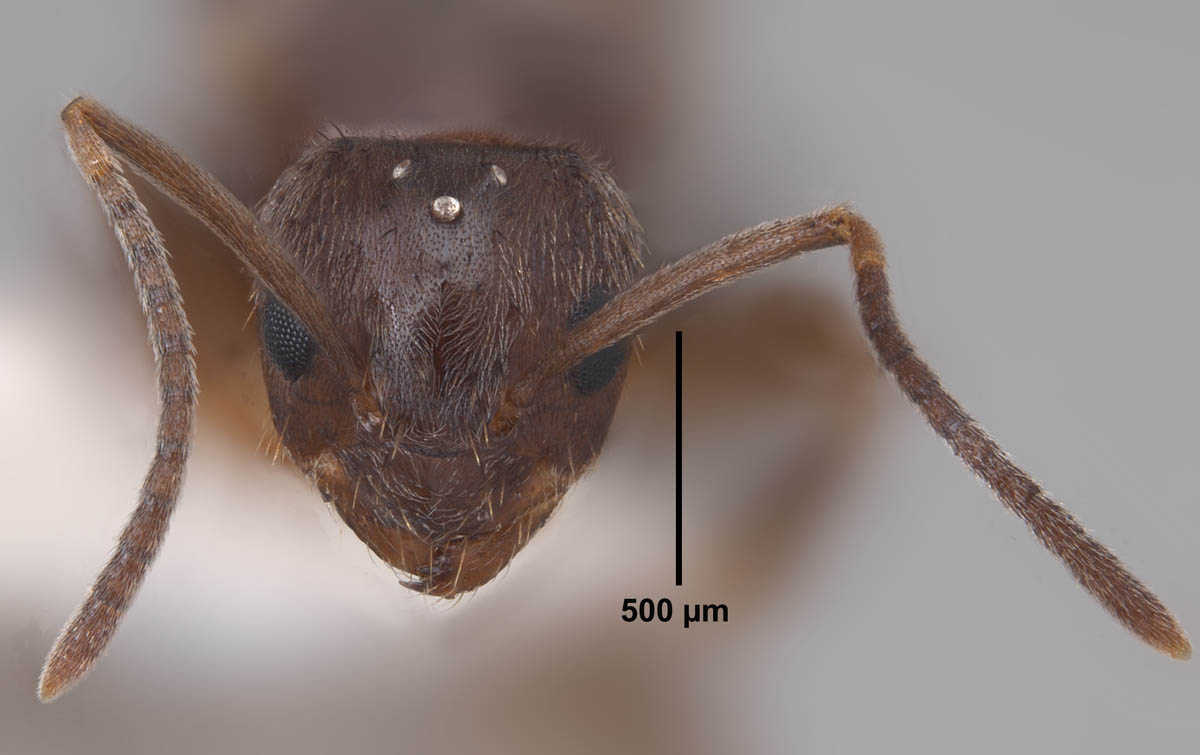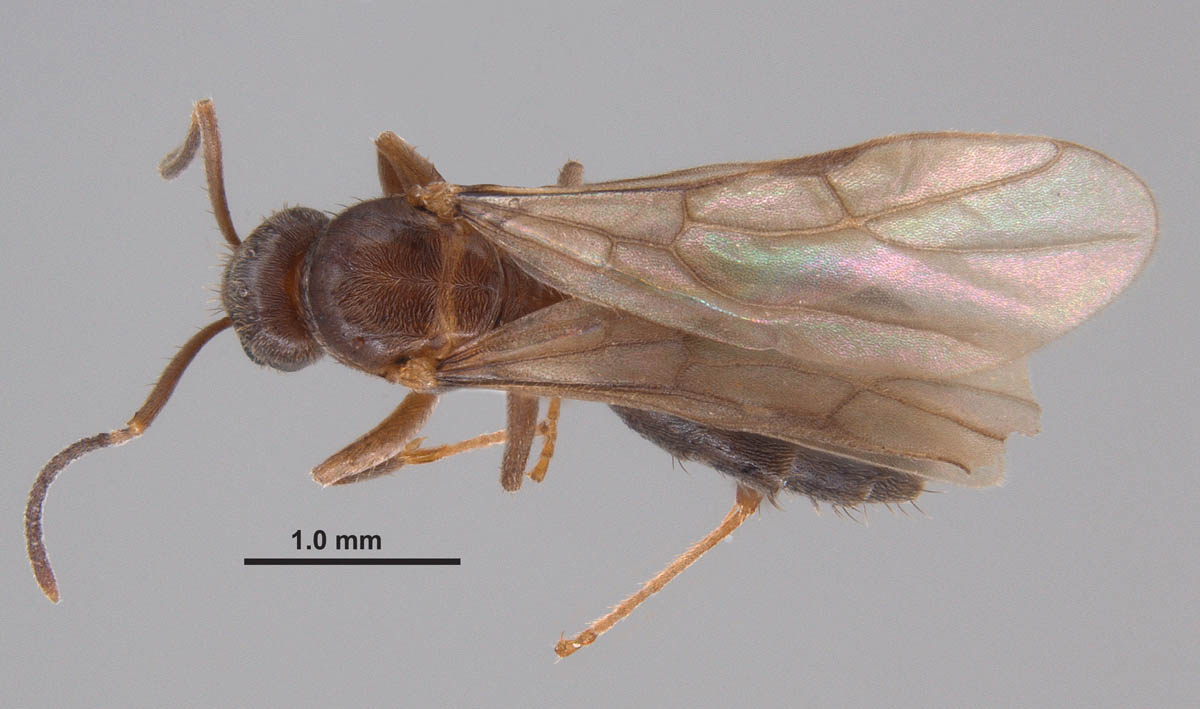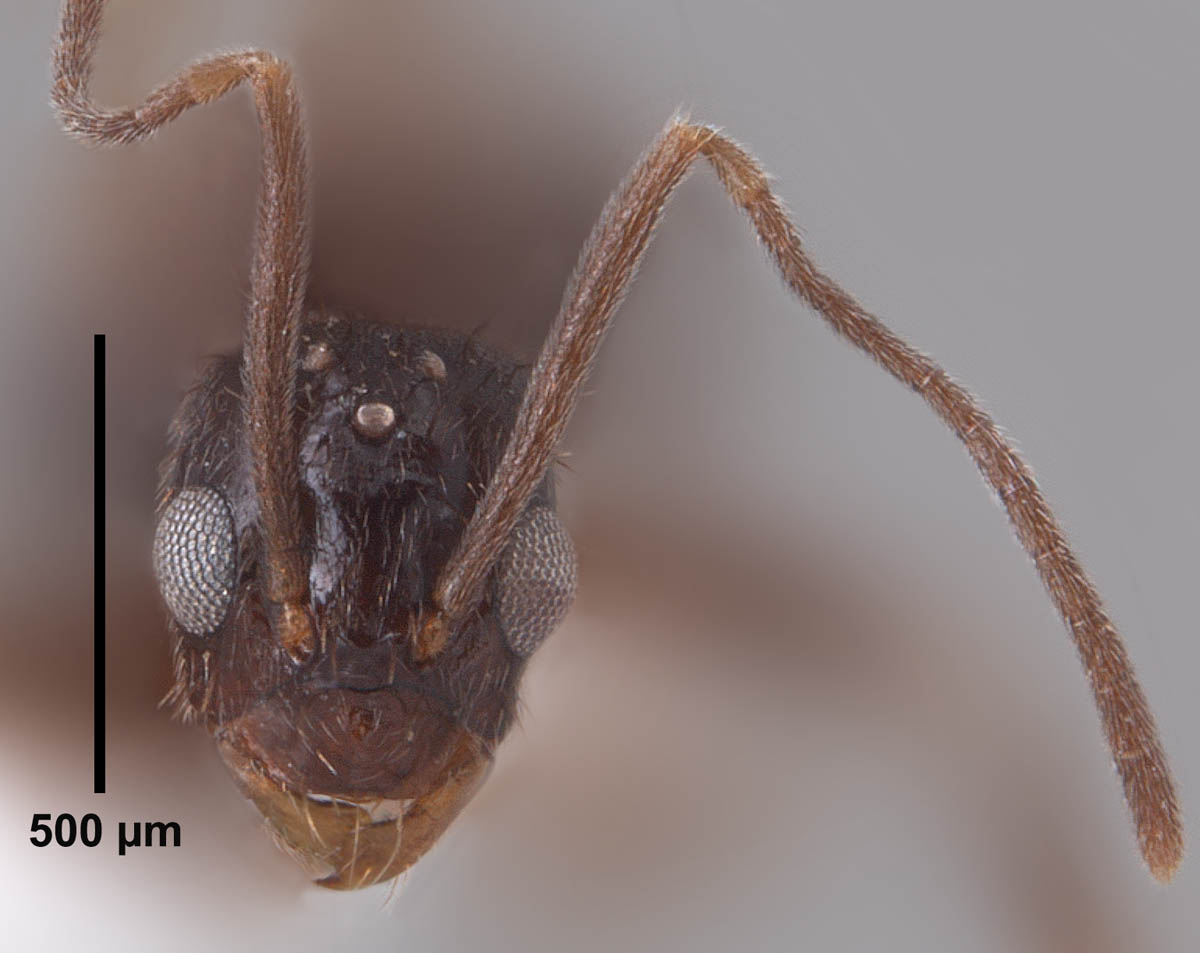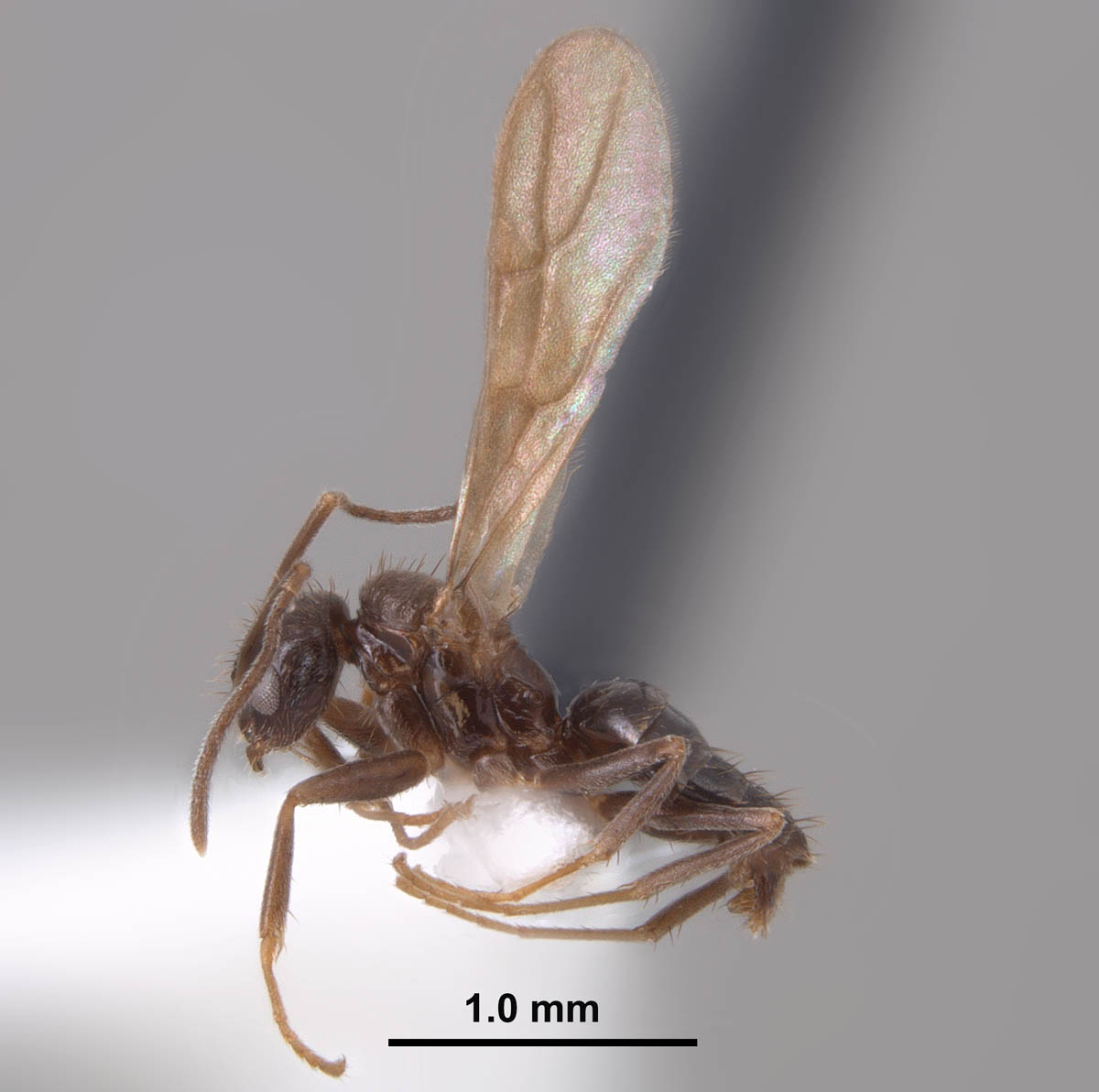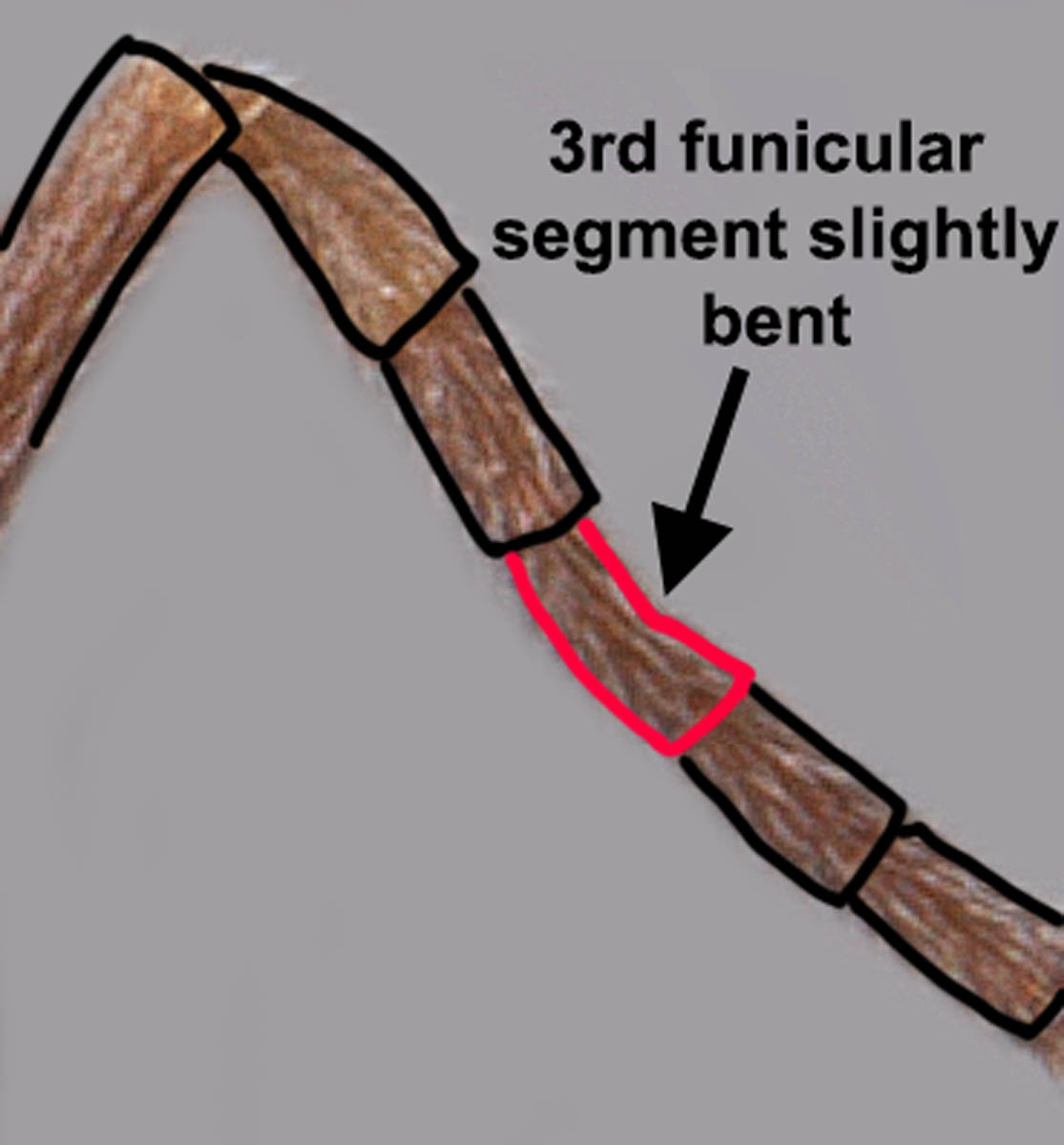Subfamily FORMICINAE Uploaded 2009; last updated 14 December 2016 |
||
Nylanderia vividula, full face view of a worker (MS, Quitman Co.) (photo by Joe A. MacGown & James Lewis) |
Nylanderia vividula, lateral view of a worker (MS, Quitman Co.) (photo by Joe A. MacGown & James Lewis) |
Nylanderia vividula, dorsal view of a worker (MS, Quitman Co.) (photo by Joe A. MacGown & James Lewis) |
Nylanderia vividula, lateral view of a worker (MS, Oktibbeha Co.) (photo by Joe A. MacGown) |
Nylanderia vividula, lateral view of mesosoma of worker showing diagnostic characters (photo by Joe A. MacGown & James Lewis) |
Nylanderia vividula, upper face view of a worker showing sparse pubescence (photo by Joe A. MacGown & James Lewis) |
Nylanderia vividula, full face view of an alate queen (MS, Washington Co.) (photo by Joe A. MacGown & James Lewis) |
Nylanderia vividula, lateral view of an alate queen (MS, Washington Co.) (photo by Joe A. MacGown & James Lewis) |
Nylanderia vividula, dorsal view of an alate queen (MS, Washington Co.) (photo by Joe A. MacGown & James Lewis) |
Nylanderia vividula, full face view of a male (MS, Carroll Co.) (photo by Joe A. MacGown & James Lewis) |
Nylanderia vividula, lateral view of a male (MS, Carroll Co.) (photo by Joe A. MacGown & James Lewis) |
Nylanderia vividula, dorsal view of a male (MS, Carroll Co.) (photo by Joe A. MacGown & James Lewis) |
Nylanderia vividula, antenna (part): note that the third funicular segment is slightly bent or angled |
||
Introduction Nylanderia sp. can be identified by having a waist with one distinct segment; acidopore at the apex of the gaster with a circular fringe of setae; 12-segmented antennae; triangular mandibles; 6-segmented maxillary palps; and head and body with dorsally erect, coarse setae. Nylanderia vividula (Nylander) (Formicinae), Nylander's crazy ant, is a small, light brown to reddish brown species thought to native to Mexico. This species is well established in the US where it is an occasional nuisance pest. In the southern United States, this species is often found nesting in disturbed, forested and urban environments. Nests are most often found in the soil and are frequently under rocks. In areas that are warm and humid for large parts of the year, reproductive can be found flying almost year round. Taxonomic History (Bolton 2016) Identification Queen: Larger than workers (HL 0.79–0.84 mm, HW 0.74–0.80 mm, SL 0.80–0.84 mm, EL 0.21–0.25 mm, MeSL 1.29–1.41 mm). 1.29-1.41 (n=5) (MEM specimens). Head about as wide as long, squarish; integument shiny underneath dense pubescence, scattered erect, dark macrochaetae present; eyes large, about 1/4 of the head length in size, located about the midway point of head; three ocelli present; mandibles elongate triangular in shape with six prominent teeth; antennae 12-segmented; scape long, terminating beyond posterior border of the head, five or more macrochaetae present. Mesosoma elongate, flattened dorsally; entire mesosoma with dense, appressed pubescence, shininess of integument not completely dulled by pubescence; numerous, short, erect macrochaetae present dorsally; pronotum rectangular in lateral view; promesonotal suture well defined; propodeum broadly rounded dorsoposteriorly, length of dorsum much shorter than length of declivity. Wings with brownish tint; forewing with costal, basal, subasal, submarginal, and marginal cell; medial vein extending to wing tip; pterostigma present; hind venation simple with only the submarginal cell closed. Waist single-segmented, petiolar node mostly shiny. Gaster overhangs petiolar node; with dense, appressed, short pubescence, and numerous longer erect setae; acidopore present at the apex. Male: Small, about the size of worker (HL 0.55–0.57 mm, HW 0.45–0.49 mm, SL 0.62–0.64 mm, EL 0.19–0.22 mm, MeSL 0.82–0.90 mm) (n=5) (MEM specimens). Light brown to dark brown, appendages slightly lighter brown. Head longer than wide, posterior edge rounded at corners; integument shiny; numerous, but not dense appressed, slightly coarse setae present: scattered longer, semi erect to erect macrochaetae present; eyes large, about 1/3 the length of head, located near midpoint of the head; three ocelli present; mandibles with strong apical tooth, margin lacking dentition; antennae 13-segmented; scape long, terminating beyond posterior border of the head; third funicular segment distinctly curved. Mesosoma shiny, with the numerous apressed pubescence on dorsum of mesoscutum and propodeal dorsum, sparse pubsecence present on pronotum, lower portion of katepisternum, and sides of propodeum; numerous erect, stout macrochaetae present on mesoscutum dorsum; propodeum lacking spines, dorsum about as long as declivious face. Wings transparent yellow gray; forewing with closed costal, basal, subbasal, marginal and submarginal cells; pterostigma present; hindwing with closed basal cell. Waist single segmented; petiolar node pointed in the lateral view and usually obscured by the anterior edge of the gaster. Gaster overhangs petiolar node; gaster shiny, with numerous, but not dense, short, appressed pubescence, and numerous longer, erect macrochaetae; genitalia external with well-developed triangular parameres. Diagnosis: Workers of Nylanderia vividula can can be recognized by their small size, light brown to reddish brown color; shiny integument with reduced pubescence, flexuous macrochaetae on head, promesonotum and gaster; 12-segmented antennae with long scapes; single petiolar node; and an acidopore at the gastral apex. Workers of this species can be separated from the similar N. faisonensis by the less dense pubescence on the face, all coxae being similar in color and not contrasting with the mesosomal color, and by typically having several short, appressed setae present on the anterior portion of the propodeum; from N. terricola by the larger eyes and generally more squared head; and by other species in the region by the color and overall shiny appearance. Males of N. vividula are readily separated from most other species in the region by the third funicular segment being distinctly curved. Biology and Economic Importance Nylanderia vividula is considered to be an occasional nuisance pest. Because of its ability to nest in such a variety of habitats, it is not uncommon to find this species in buildings, especially in colder climates where it is too cold for them to survive outside. Nylanderia vividula is attracted to sugary food and will readily forage from any food sources, including in homes or other buildings. This may outcompete other ants for resources. Distribution Australian: Indonesia, Solomon Islands (AntWeb.org and AntWiki.org). U.S. Distribution: AL, AR, AZ, CA, FL, GA, LA, OK, MS, NC, NM, SC, TN, TX (AntWeb.org and MEM). Acknowledgments Literature Cited Bolton, B. 2016. Bolton World Catalog Ants. Available online: http://www.antweb.org/world.jsp. Accessed 9 March 2016. Emery, C. 1906. Note sur Prenolepis vividula Nyl. et sur la classification des espèces du genre Prenolepis. Annales de la Société Entomologique de Belgique 50:130-134. Emery, C. 1910. Beiträge zur Monographie der Formiciden des paläarktischen Faunengebietes. (Hym.) Teil X. Deutsche Entomologische Zeitschrift 1910:127-132. Emery, C. 1925. Hymenoptera. Fam. Formicidae. Subfam. Formicinae. Genera Insectorum 183:1-302. Kallal, R. J.; LaPolla, J. S. 2012. Monograph of Nylanderia (Hymenoptera: Formicidae) of the World, Part II: Nylanderia in the Nearctic. Zootaxa 3508:1-64. Kempf, W. W. 1972. Catálogo abreviado das formigas da região Neotropical. Studia Entomologica 15:3-344. LaPolla, J. S.; Brady, S. G.; Shattuck, S. O. 2010. Phylogeny and taxonomy of the Prenolepis genus-group of ants (Hymenoptera: Formicidae). Systematic Entomology 35:118-131. Mayr, G. 1876. Die australischen Formiciden. Journal des Museum Godeffroy 12:56-115. Mayr, G. 1886. Die Formiciden der Vereinigten Staaten von Nordamerika. Verhandlungen der Kaiserlich-Königlichen Zoologisch-Botanischen Gesellschaft in Wien 36:419-464. Nylander, W. 1846. Adnotationes in monographiam formicarum borealium Europae. Acta Societatis Scientiarum Fennicae 2:875-944. Radchenko, A. G. 2007. The ants (Hymenoptera, Formicidae) in the collection of William Nylander. Fragmenta Faunistica (Warsaw) 50:27-41. Trager, J. C. 1984. A revision of the genus Paratrechina (Hymenoptera: Formicidae) of the continental United States. Sociobiology 9:49-162. |
||


